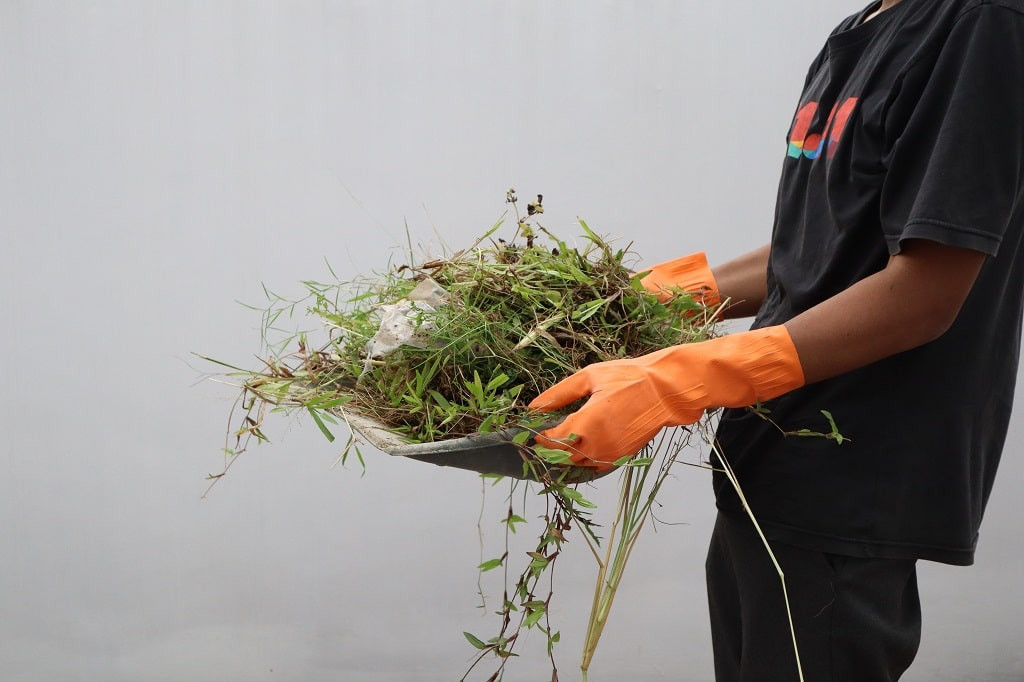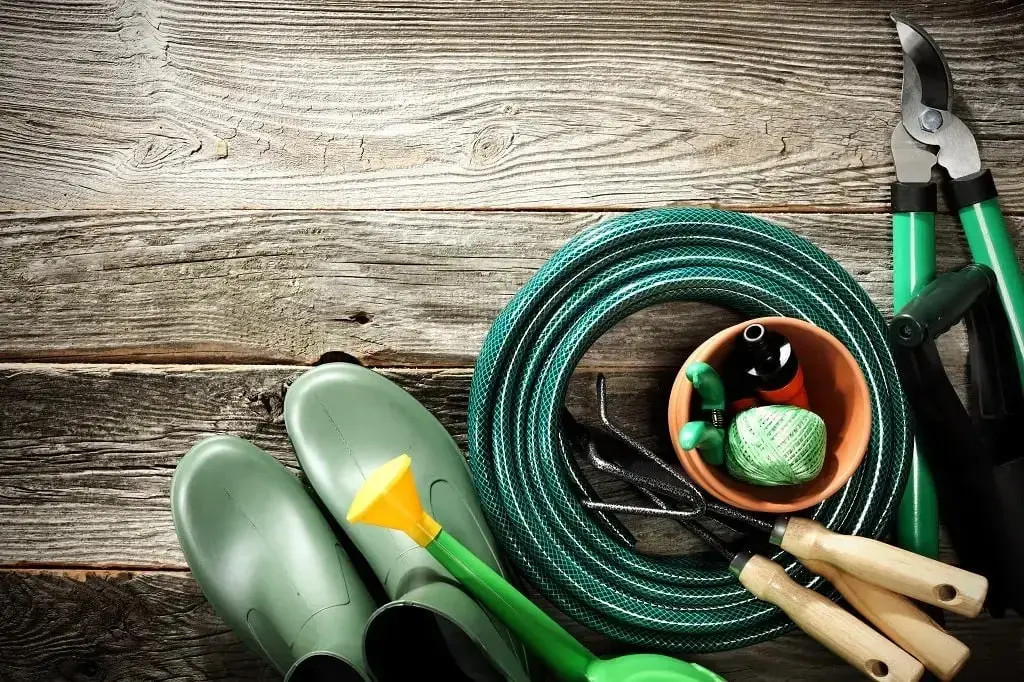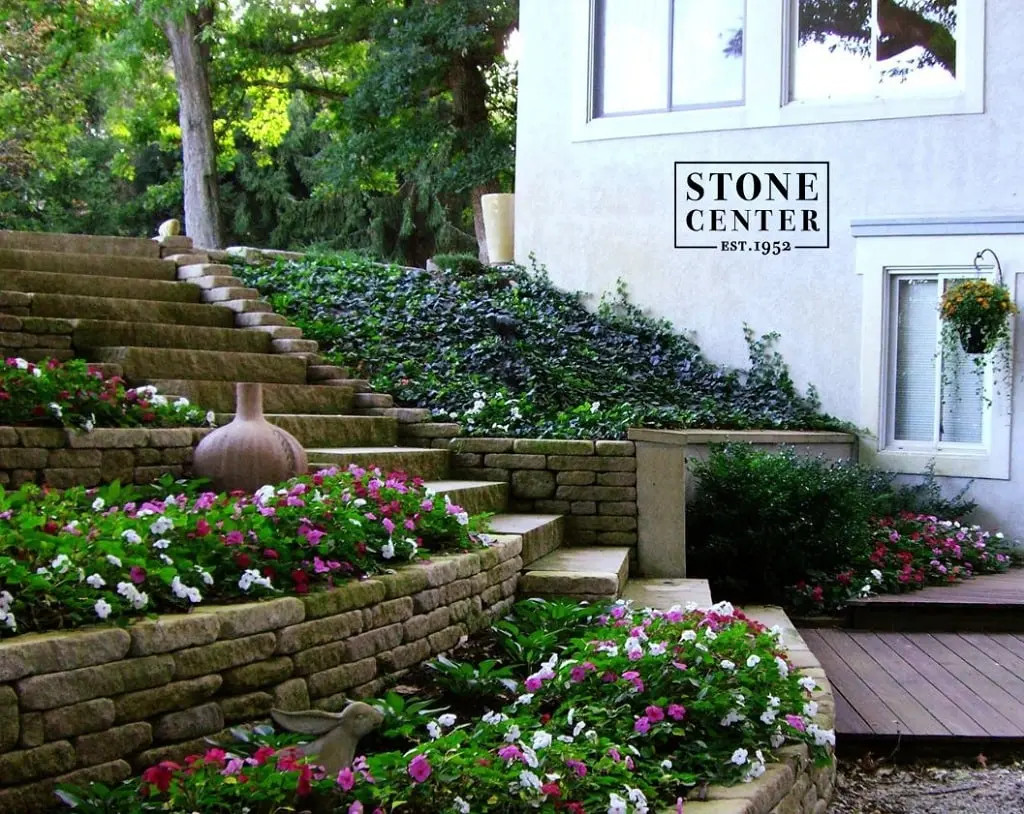Keeping rock beds clean involves regular maintenance to preserve their aesthetic appeal and prevent issues like weed growth and drainage problems. At rockscapes.net, we understand the importance of maintaining your landscape’s beauty. By implementing the right cleaning techniques, you can ensure your rock beds remain pristine, enhancing the overall look of your outdoor space. Let’s delve into effective methods for cleaning rock beds and preserving your garden’s beauty with decorative stones, gravel mulch, and rock arrangements.
1. Why Is It Important to Keep Rock Beds Clean?
Maintaining clean rock beds is crucial for several reasons, including aesthetics, preventing weed growth, ensuring proper drainage, and prolonging the life of your landscape.
- Enhancing Aesthetics: A clean rock bed significantly improves the visual appeal of your outdoor space, making it more inviting and attractive.
- Preventing Weed Growth: Regularly cleaning your rock beds helps prevent the growth of unsightly weeds that can detract from the beauty of your landscape.
- Improving Drainage: Clean rock beds ensure proper drainage, preventing water buildup and potential water damage.
- Extending Longevity: Proper maintenance and cleaning can extend the lifespan of your landscaping, saving you money on costly repairs and replacements.
2. What Tools and Materials Do I Need to Clean Rock Beds?
To effectively clean your rock beds, gather the following essential tools and materials.
| Tool/Material | Purpose |
|---|---|
| Garden Hose | For rinsing off dirt and debris. |
| Stiff-Bristle Brush | For scrubbing rocks to remove stubborn stains and algae. |
| Leaf Blower | For removing loose leaves and debris quickly. |
| Garden Rake | For gathering and removing larger debris. |
| Bucket | For mixing cleaning solutions. |
| Mild Detergent | For creating a gentle cleaning solution. |
| White Vinegar | For tackling tough stains and algae. |
| Weed Killer (Optional) | For preventing weed growth. Be sure to choose a product that is safe for your specific plants and environment; consult rockscapes.net for recommendations. |
| Gloves | To protect your hands during cleaning. |
| Safety Goggles | To protect your eyes, especially when using a pressure washer. |
3. How Do I Prepare the Area Before Cleaning Rock Beds?
Before you start cleaning, preparing the area is crucial for an effective and efficient process.
- Remove Furniture and Decorations: Clear the area of any furniture, decorations, or other items that might obstruct your cleaning process.
- Clear Loose Debris: Use a garden rake or leaf blower to remove leaves, twigs, and other loose debris from the rock beds. This step will prevent dirt from being spread back onto the rocks during cleaning.
- Protect Surrounding Plants: Cover any nearby plants with a tarp or plastic sheet to protect them from cleaning solutions and debris.
4. What Is the Best Way to Remove Leaves and Debris From Rock Beds?
Removing leaves and debris is a fundamental step in maintaining clean rock beds.
- Use a Leaf Blower: A leaf blower is an effective tool for quickly removing loose leaves, small twigs, and other lightweight debris from the surface of the rock bed.
- Employ a Garden Rake: For larger debris, such as branches, and heavier leaves, use a garden rake to gather and remove the material. Be gentle to avoid disturbing the rocks.
- Manual Removal: For hard-to-reach areas or delicate plants, manually remove debris by hand, wearing gloves for protection.
- Regular Maintenance: Regularly remove debris to prevent it from decomposing and staining the rocks. Aim to do this at least once a week, or more frequently during the fall when leaves are abundant.
 Clean Landscape Rock
Clean Landscape Rock
5. How Do I Clean Different Types of Rocks in Rock Beds?
Different types of rocks require specific cleaning methods to maintain their appearance and prevent damage.
5.1. Cleaning Large Landscape Rocks
Large landscape rocks can be a stunning addition to any yard, but they require specific cleaning techniques due to their size and weight.
- Gather Tools: You will need a pressure washer or garden hose, a stiff-bristle scrub brush, and a bucket.
- Remove Dirt and Debris: Use a brush, rake, or broom to remove any loose dirt from the rock surface. A leaf blower can also be used to blow away leaves and small debris.
- Rinse the Rocks: Gently rinse off the rocks using a garden hose. Start at the top and work your way down to allow debris to flow away from the clean areas.
- Scrub Stains: For tough stains or algae growth, use a stiff-bristle brush or pressure washer. Be cautious when using a pressure washer to avoid damaging the rocks.
- Clean Crevices: Use a small brush to clean the crevices and hard-to-reach areas. A warm water and vinegar solution can be used for deeper cleaning.
- Final Rinse: After scrubbing, rinse the rocks with a hose to remove any remaining dirt or cleaning solution.
- Allow to Dry: Allow the rocks to air dry, or use a leaf blower or dry towel to remove any remaining moisture.
5.2. Cleaning White Landscape Stones
White landscape stones are popular for their clean and polished look, but they can easily show dirt and stains.
- Preparation: Remove any nearby obstacles, such as furniture or garden decorations.
- Gather Supplies: You’ll need a garden hose or pressure washer, a stiff-bristle brush, a bucket with a mild detergent solution, gloves, and safety goggles.
- Remove Loose Debris: Clear away leaves, twigs, and other loose debris using a rake or leaf blower.
- Rinse the Stones: Gently rinse the white landscape stones using a garden hose or pressure washer, starting from the top and working your way down.
- Apply Cleaning Solution: Mix a gentle detergent with water in a bucket. Dip a stiff-bristle brush into the solution and scrub the stones.
- Use Bleach for Stubborn Stains: For stubborn stains, mix one part bleach with four parts water in a separate bucket. Carefully apply the bleach solution to the stained areas and let it sit for a few minutes before rinsing thoroughly.
- Rinse and Dry: After scrubbing, rinse the stones again with the garden hose or pressure washer to remove any remaining dirt and cleaning solution. Allow the stones to air dry completely to prevent water spots.
5.3. Cleaning Stone Pavers
Stone pavers require regular cleaning to maintain their appearance and prevent the growth of moss and algae.
- Sweep the Stones: Start by sweeping away leaves and other small debris from the area around the stones using a stiff-bristle push broom or leaf blower.
- Rinse: Gently rinse each stone surface from top to bottom using a garden hose or pressure washer.
- Scrub Stains: Dip your brush in a bucket containing water and white vinegar, then scrub any spots with visible stains or algae growths.
- Clean Crevices: Use warm water mixed with white vinegar and a toothbrush or small brush to get into those hard-to-reach cracks.
- Rinse Again and Let Dry: After scrubbing, rinse everything off one last time.
5.4. Cleaning River Rock
River rocks add a natural and organic element to your landscape. Cleaning them involves a few simple steps.
- Prepare the Area: Remove any furniture, decorations, or other items that might obstruct your cleaning process.
- Remove Leaves and Debris: Use a rake or leaf blower to clear the area, ensuring that all debris is removed.
- Rinse the Rocks: Use a garden hose or pressure washer to rinse off the river rocks.
- Scrub with Cleaning Solution: Create a mild cleaning solution by mixing water and a gentle detergent in a bucket. Dip a stiff-bristle brush or broom into the solution and scrub the rocks, focusing on any areas with visible stains or algae growth.
- Clean Crevices: Use a small brush or toothbrush dipped in your cleaning solution to gently scrub the crevices, removing any dirt or buildup that may be present.
- Rinse Again: Use your garden hose to rinse them again.
- Allow to Dry: Give them time to air dry.
 How to Clean Landscape Rocks
How to Clean Landscape Rocks
6. What Cleaning Solutions Are Safe to Use on Rock Beds?
Choosing the right cleaning solution is vital to protect your rocks and surrounding plants.
- Mild Detergent and Water: A solution of mild dish soap and water is generally safe for most types of rocks. It effectively removes dirt and grime without causing damage.
- White Vinegar and Water: A mixture of equal parts white vinegar and water is an excellent natural cleaner for tackling tough stains and algae growth.
- Stone Cleansers: Specialized stone cleansers are available for more delicate or porous stones. These are designed to clean without damaging the stone’s surface. Always follow the manufacturer’s instructions.
- Avoid Harsh Chemicals: Harsh chemicals like bleach, ammonia, and strong acids can damage certain types of rocks and harm nearby plants and wildlife. Always opt for gentler, more natural solutions.
- Test in an Inconspicuous Area: Before applying any cleaning solution to the entire rock bed, test it in an inconspicuous area to ensure it doesn’t cause discoloration or damage.
7. How Can I Remove Algae and Moss From Rock Beds?
Algae and moss can be a common problem in rock beds, especially in damp and shaded areas.
- Prepare a Vinegar Solution: Mix equal parts white vinegar and water in a spray bottle.
- Apply the Solution: Spray the vinegar solution directly onto the affected areas, ensuring the algae and moss are thoroughly saturated.
- Let It Sit: Allow the solution to sit for 15-20 minutes. This will give the vinegar time to penetrate and kill the algae and moss.
- Scrub the Rocks: Use a stiff-bristle brush to scrub the rocks, removing the loosened algae and moss.
- Rinse Thoroughly: Rinse the rocks with a garden hose to remove any remaining debris and vinegar solution.
- Repeat if Necessary: For stubborn growth, repeat the process as needed.
- Improve Drainage and Sunlight: To prevent future growth, improve drainage in the area and ensure the rocks receive adequate sunlight.
8. What Is the Best Way to Prevent Weeds in Rock Beds?
Preventing weeds is an ongoing task, but these methods can significantly reduce their presence.
- Use Weed Barriers: Install a weed barrier or landscape fabric underneath the rock bed to prevent weeds from sprouting. Ensure the fabric is properly installed and covers the entire area.
- Apply a Pre-Emergent Herbicide: Apply a pre-emergent herbicide to the rock bed to prevent weed seeds from germinating. Choose a product that is safe for your specific plants and environment.
- Regularly Remove Weeds: Regularly inspect the rock bed and remove any weeds as soon as they appear. Hand-pulling is effective for small infestations, while a weeding tool can help remove larger weeds.
- Apply Mulch: Adding a layer of organic mulch around plants in the rock bed can help suppress weed growth.
- Maintain Proper Drainage: Ensure the rock bed has proper drainage to prevent standing water, which can promote weed growth.
- Use a Post-Emergent Herbicide: For existing weeds, use a post-emergent herbicide to kill them. Be careful to apply the herbicide only to the weeds, avoiding contact with desirable plants.
9. How Often Should I Clean My Rock Beds?
The frequency of cleaning depends on several factors, including the type of rocks, the climate, and the amount of debris in the area.
- Regular Debris Removal: Remove leaves and debris as needed, ideally once a week or more frequently during the fall.
- General Cleaning: A general cleaning, including rinsing and scrubbing, should be done every 2-3 months.
- Deep Cleaning: A deep cleaning, including the use of cleaning solutions and thorough scrubbing, should be done once or twice a year.
- Algae and Moss Removal: Check for algae and moss growth regularly, and address it as soon as it appears to prevent it from spreading.
- Seasonal Adjustments: Adjust your cleaning schedule based on the season. For example, you may need to clean more frequently during the spring and fall when there is more debris.
 Cleaning Landscape Rocks
Cleaning Landscape Rocks
10. How Can I Protect My Rock Beds From Future Dirt and Stains?
Protecting your rock beds from future dirt and stains can significantly reduce the need for frequent cleaning.
- Apply a Sealant: Apply a sealant specifically designed for stone surfaces to help prevent the buildup of dirt, algae, and stains.
- Improve Drainage: Ensure the rock bed has proper drainage to prevent standing water, which can lead to staining and algae growth.
- Install Gutter Guards: Install gutter guards to prevent leaves and other debris from falling into the rock bed from nearby trees or shrubs.
- Use Organic Mulch: Consider using organic mulch around your plants to prevent weed growth and keep the rock bed clean.
- Regular Maintenance: Regular maintenance, including removing debris and rinsing the rocks, is essential for preventing dirt and stains from accumulating.
- Avoid Overwatering: Avoid overwatering plants in the rock bed, as excessive moisture can promote algae and moss growth.
Maintaining clean rock beds is essential for preserving the beauty and longevity of your landscape. By following these tips and techniques, you can keep your rock beds looking their best and enjoy a stunning outdoor space.
Looking for more ideas to keep rock beds clean? Visit rockscapes.net for a wealth of inspiration, detailed guides, and expert advice on landscape rock design and maintenance in the USA. Our team is ready to assist you with everything from selecting the perfect stones to mastering the art of landscape upkeep. Contact us today at Address: 1151 S Forest Ave, Tempe, AZ 85281, United States or Phone: +1 (480) 965-9011.
FAQ: Keeping Your Rock Beds Pristine
1. What is the best way to clean river rock?
The best way to clean river rock involves removing debris, rinsing with a hose, scrubbing with a mild detergent, cleaning crevices with a small brush, rinsing again, and allowing to dry.
2. How often should I clean my landscape rocks?
You should remove debris weekly, perform a general cleaning every 2-3 months, and do a deep cleaning once or twice a year, adjusting based on climate and debris accumulation.
3. Can I use a pressure washer to clean my rock beds?
Yes, but use caution. A pressure washer can be effective, but use a low-pressure setting to avoid damaging the rocks or disturbing the surrounding landscape.
4. What is the best solution for removing algae from rocks?
A mixture of equal parts white vinegar and water is effective for removing algae. Apply, let sit, scrub, and rinse thoroughly.
5. How do I prevent weeds from growing in my rock beds?
Use weed barriers, apply pre-emergent herbicides, regularly remove weeds, use mulch, maintain proper drainage, and consider post-emergent herbicides for existing weeds.
6. Are there any natural ways to clean landscape stones?
Yes, using a mixture of white vinegar and water or mild dish soap and water are natural and effective cleaning solutions.
7. How do I clean white landscape stones without damaging them?
Use a gentle detergent, avoid harsh chemicals like bleach (unless heavily diluted), and rinse thoroughly. Allow the stones to air dry to prevent water spots.
8. What tools are essential for maintaining rock beds?
Essential tools include a garden hose, stiff-bristle brush, leaf blower, garden rake, bucket, and gloves.
9. How can I protect my rock beds from future dirt and stains?
Apply a sealant, improve drainage, install gutter guards, use organic mulch, and maintain regular debris removal.
10. Can I use bleach to clean my landscape rocks?
Yes, but use it sparingly and dilute it properly (one part bleach to four parts water). Rinse thoroughly to prevent damage to plants and wildlife.